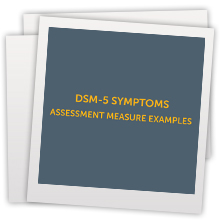Understanding children with ADHD in family practice

Understanding children with ADHD in family practice
By Anise Flowers, PhD and Maggie Kjer, PhD
Referring for an ADHD evaluation
Family physicians are often the family’s first point of contact when children are struggling in school and at home due to behavioral health issues, including Attention Deficit Hyperactivity Disorder. In some states, schools refer families to their physician for ADHD diagnosis consideration. This is a standard practice in Texas because ADHD is often diagnosed by the child’s family physician or pediatrician, with supporting evidence from the school and parents.
According to the National Institutes of Health, approximately one in five children in the United States suffers from some form of mental illness, yet 80 percent of these children do not receive treatment. It is estimated that 75 percent of children and adolescents with psychiatric disorders are seen by their family physician. Furthermore, 7.5 percent of children and adolescents are prescribed a psychiatric medication, and 85 percent of psychopharmacologic prescribing is by pediatric providers.
ADHD is one of the most common mental health diagnoses in children, affecting around 11 percent of children in the U.S. according to the CDC. The core symptoms of ADHD are inattention, impulsivity, and hyperactivity. Children with ADHD often have difficulty concentrating and are easily distractible, disorganized, impulsive, and hyperactive. The most common symptoms associated with poor school performance are inattention and impulsivity. Hyperactivity alone does not have a negative effect on academic performance. In fact, many high-performing students and graduate students are hyperactive. The inattention coupled with impulsivity has the most devastating impact on academic performance and social skills in children with ADHD. An inattentive student isn’t likely to get straight As, but many hyperactive children who are not inattentive are top performers academically.
There are three types of ADHD diagnoses: inattentive type, hyperactive-impulsive type, and combined type. The most common type is combined. Children with this type have symptoms of both inattentive and hyperactive-impulsive types.
The diagnostic criteria for ADHD in DSM-5 includes 18 symptoms, which are divided into two symptom domains (inattention and hyperactivity/impulsivity), of which at least six symptoms in one domain are required for diagnosis. There is a cross-situational requirement that several symptoms must be present in more than one setting, and several inattentive or hyperactive-impulsive symptoms must have been present prior to age 12. The DSM-5 has placed ADHD in the neurodevelopmental disorders chapter to reflect recent research into brain development and current practices.
Assessment approach
When a child is referred for an ADHD evaluation, best practice suggests a multimethod multi-trait approach. First, multimethod means that more than one assessment practice will be used. An evaluation may include interviews, observations, rating scales, or direct assessment and should utilize multiple respondents. In 2011, the American Academy of Pediatrics released an updated report on practice guidelines for the diagnosis of ADHD recommending that information be obtained from both home and school settings and evaluations cover multiple areas including symptom onset/duration and the degree of impairment on everyday functioning.
Second, multi-trait means that the evaluation should include a broad-band measure that will assess multiple aspects of the child’s behaviors, emotions, or personality. Broad-band assessment is important for a couple of reasons. A narrow-band measure, like an “ADHD Rating Scale,” will result in too many false positives. If you only test for one condition then you are likely to over identify that condition and miss alternative explanations for the behavior problems.
For example, during an initial evaluation, a physician would usually run a comprehensive blood panel as opposed to testing for a single indicator. Also, for children who are diagnosed with ADHD, comorbidity with another disorder (depression, anxiety, conduct disorder, etc.) is more often the rule than the exception.
Comorbidity is another reason that comprehensive measures are important, since as many as one-third of children diagnosed with ADHD also have a co-existing condition. According to the 2011 AAP Practice Guidelines, “In the evaluation of a child for ADHD, the primary care clinician should include assessments for other conditions that might coexist with ADHD, including emotional or behavioral (e.g., anxiety, depressive, oppositional defiant, and conduct disorders), developmental (e.g., learning and language disorders or other neurodevelopmental disorders), and physical (e.g., tics, sleep apnea) conditions.”
Types of assessment tools
In addition to interviews with the child, parents, or teachers, a psychologist will generally use multiple assessment approaches. Classroom observations are important for verifying the problematic behaviors in a naturalistic setting. Observations may be informal or data may be collected on specific behaviors in a structured manner such as with the BASC-3 Student Observation System. Comprehensive rating scales (BASC-3, Achenbach CBCL) for the child, parent, and teacher are an example of the broad-band measures mentioned above. Rating scales yield norm-referenced scores which indicate how a child’s behavior compares to that of a nationally representative comparison group. In addition to diagnosis, behavior rating scales can be used as an objective way to measure medication efficacy.
Using data versus the informal parental report is a more psychometrically sound method of establishing change in behavior. Sometimes monitoring may be conducted with a shorter questionnaire than the comprehensive measure that is used for an initial evaluation. For example, the BASC-3 Flex monitor allows clinicians to create a brief rating scale that will reliably measure target symptoms and graph change over time.
Lastly, direct assessments are instruments that are administered directly to the child. If academic performance is a concern, this may include a test of achievement or cognitive ability. For ADHD evaluations, a continuous performance test such as Quotient or the Conners CPT will often be utilized. A continuous performance test measures different areas of attention such as sustained attention, inattentiveness, impulsivity, and vigilance to provide objective data regarding a child’s attentional challenges.
Treatment Considerations
Behavioral health care provided by family physicians for children with ADHD may include psychological education for the family. Depending on the needs of the child, a treatment plan may also include neuropsychological testing to assess for learning and other comorbid disorders, determine targeted interventions, behavior plans, and psychotherapy. Behavior therapy is commonly used to treat symptoms of ADHD in children, particularly in preschool age children. For school age children, a combination of behavior therapy and medication is often the most effective approach.
ADHD is very responsive to stimulant medications and as a result, ADHD diagnoses and the use of stimulant medication have steadily increased over time. The American Academy of Pediatrics and the American Academy of Child and Adolescent Psychiatry practice guidelines endorse stimulant medications as first-line treatment. Recommendations for medicating ADHD children are robustly evidence based. Specifically, the multimodal treatment of ADHD trials showed improvement in inattention, hyperactivity, and impulsivity and reduction of general disruptive behavior and, to a lesser degree, improvements in academic achievement and appropriate social skills and peer relations.
An ADHD diagnosis carries with it a high comorbidity rate (between 50 percent and 90 percent) with anxiety and depression. The use of selective serotonin re-uptake inhibitors is considered first-line treatment for depression and anxiety symptoms in children but physicians must be aware of drug interactions when prescribing with stimulant medication for their patients with ADHD.
Physicians must also be aware of additional commonly occurring comorbid psychiatric disorders with ADHD, such as oppositional defiant disorder, conduct disorder, bipolar disorder, and substance abuse. These present a complex set of symptoms that may be best evaluated using an integrated mental healthcare model where the child’s family physician collaborates with a psychologist and/or psychiatrist to develop a treatment plan for these depressed or anxious ADHD children and adolescents.
A child or adolescent with an ADHD diagnosis does not automatically receive special education services through the Individuals with Disabilities Education Act in school. There must be a documented academic and/or social skills deficit or emotional disorder that impacts academic performance and age appropriate peer relations.
If, for example, a child is evaluated and their ability is high-average but their performance in school is average or low-average due to ADHD type symptoms, they may not be provided special education services under IDEA. Unless the ADHD significantly impairs the child’s everyday functioning in school as reported by teachers, the student, and/or the parents, the child will not qualify for Special Education services.
The school evaluation team may consider a medical diagnosis of ADHD during the evaluation process and determine the child may receive accommodations through Section 504 of the Americans with Disabilities Act instead of special education services.
A best practice model for making sure a patient receives the appropriate level of support and services in school for ADHD is to ensure clear communication between the family physician and the school, usually through the parent. However, there are a few recent school mental health framework models that build direct communication channels between all professionals working with the patient (physicians, psychologists, psychiatrists, teachers, school staff) and the parents.
The onset and diagnosis of ADHD generally occurs in childhood. However, research shows that ADHD is a developmental disorder that often continues into adulthood. Sometimes, a parent has a child referred for an ADHD evaluation and then the parent realizes that they have had this undiagnosed condition as well. As children grow into adolescence and young adulthood, some of them have an improvement in symptoms and may no longer require medication. Other individuals — as many as 60 percent — will continue to need treatment for ADHD symptoms into adulthood.
Summary
Decades of research has established that ADHD is a neurodevelopmental problem which affects approximately 11 percent of children in the U.S. Family practice physicians are instrumental in the identification and treatment of these children. Key issues to remember include 1) the importance of a comprehensive assessment that encompasses comorbid disorders; 2) treatment may include both behavior management and medication; 3) medication titration is essential and rating scales can provide some objective data to assist with maximizing success while minimizing side effects; 4) collaboration and communication between physicians, parents, and school personnel is essential; and 5) ADHD symptoms will often continue into adulthood.
About the authors
Dr. Anise Flowers is an Assessment Consultant for Pearson Clinical Assessment in South Texas and Arkansas. She has a PhD in Clinical Child Psychology and has experience working in Pediatric Psychology at several children’s hospitals.
Dr. Maggie Kjer is an Assessment Consultant/Regional Manager for Pearson Clinical Assessment in the Southwest/Southeast region. Dr. Kjer is a former special education administrator and teacher. She has extensive experience working with ADHD children and their parents in school settings.
